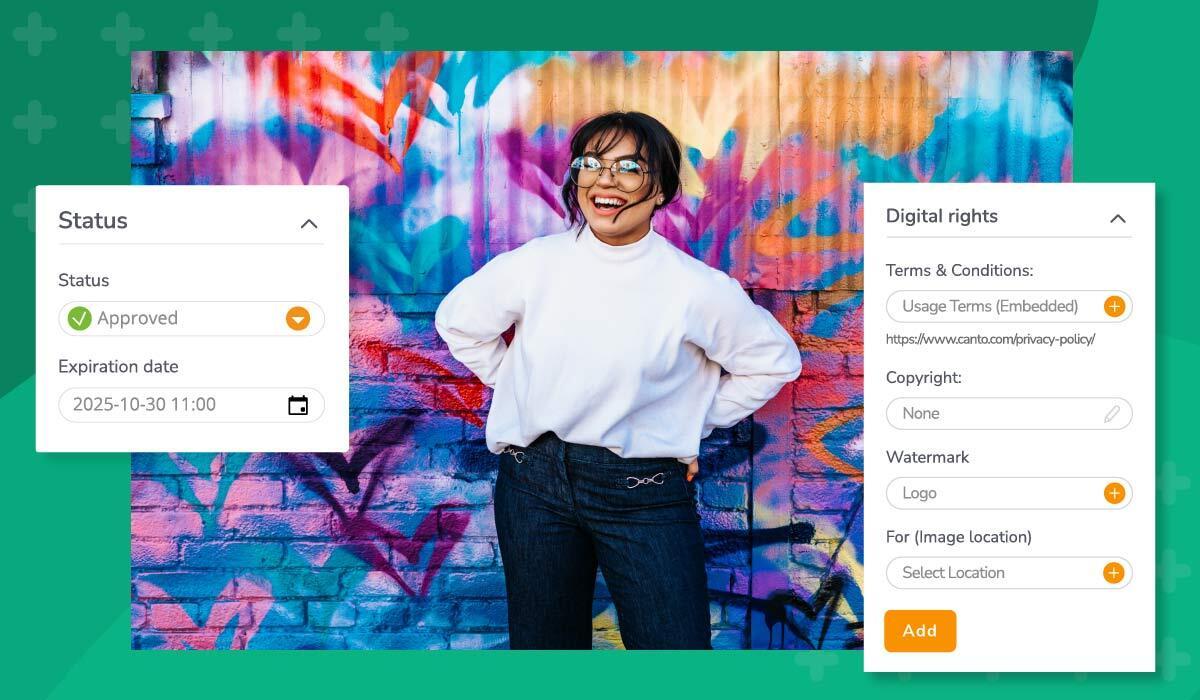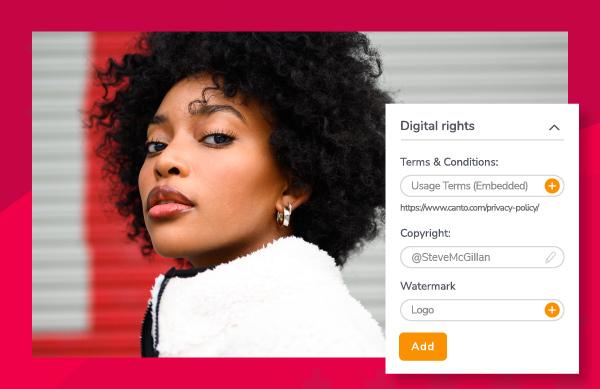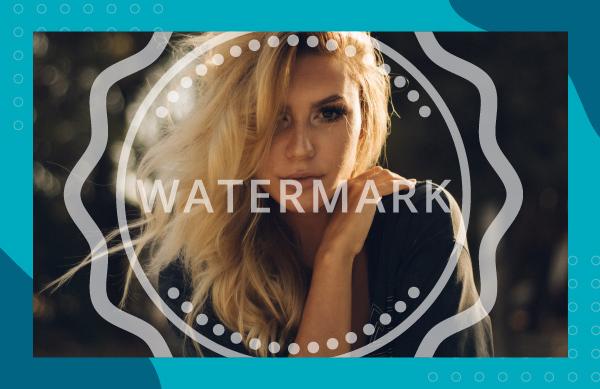Why your content needs digital rights management (DRM)
| December 16, 2021

The digital age has made it easier than ever for content to be taken from one source and reused elsewhere. Modern web browsers can download images, video, and other content files from just about anywhere, even when those files are supposed to be protected by copyright. While an individual user isn’t likely to face legal consequences for downloading a copyrighted image to serve as their desktop background, the same can’t be said for creative teams working with digital content intended for commercial use.
The risks of copyright violations
Using copyrighted or licensed materials incorrectly can expose organizations to serious liability in the form of fines or lawsuits. In 2021, for instance, a photographer filed a $12 million lawsuit against video game developer Capcom for using 80 images without consent. Microsoft saw a $2.25 million lawsuit filed against them for using 15 images without obtaining the appropriate license. While these examples involve large, prominent companies, the same risks apply to individuals and small businesses. Getty Images, in particular, is rather infamous for using search tools to canvas the internet to find unauthorized image uses.
On the other side of the digital rights ledger, failing to take measures to track and manage proprietary content makes it difficult to prevent unauthorized usage. Implementing digital rights management (DRM) tools can help creative teams avoid using licensed content incorrectly and protect their digital assets from piracy.
What is digital rights management (DRM)?
Digital rights management is a combination of solutions that track content and restrict its access to authorized users. Most DRM tools embed special code into a digital asset’s metadata, making it easy to quickly identify licensing information and control permissions related to the file. This also makes it possible to trace files that have been used without authorization back to their source, which is especially important in the event of a copyright dispute.
Accurately labeling copyrighted content allows the DRM solution to add copy protection features such as digital watermarks, download limitations, or device restrictions. It can also require users to provide some form of authentication to access the file. By controlling how licensed content can be used, organizations can better protect their valuable digital assets.

How digital asset management (DAM) uses DRM
While DRM tools and strategies can take many forms, the most effective solutions come built into existing content management systems. When creative teams are working with digital assets, they don’t want to stop every few minutes to retrieve licensed content from a separate location. Integrating DRM with digital asset management (DAM) platforms makes it easier to uphold file security, prevent misuse of assets, and protect organizations from copyright damage claims involving intellectual property.
Companies of all sizes are increasingly using DAM solutions to provide a single source of truth for their digital assets. These platforms make it much easier to share content with people inside and outside the organization. Thanks to DRM integration, licensing information can be stored with the metadata associated with each asset to ensure that everyone working with a piece of content knows exactly how it can be used.
5 benefits of digital rights management (DRM)
Implementing DAM solutions that use DRM tools provides several important benefits to creative teams and enterprises as a whole.
1. Protect brand integrity
Since DRM protections allow organizations to control access to their digital content with a combination of watermarks and download restrictions, creative teams can ensure that their branded assets aren’t being repurposed for use elsewhere. Unauthorized content can quickly be identified and removed to avoid creating brand confusion in the marketplace. Most DAM platforms have the ability to apply DRM protections on licensed content stored in the system, making it easy to protect branded assets.
2. Prevent unauthorized use
The last thing an organization wants is to be hit with a copyright lawsuit for using an unlicensed image. For creative teams, DRM tools can help ensure that all the digital assets available for use within their DAM system have the appropriate licenses in place. This avoids the potentially costly or embarrassing situation of someone using a digital asset without permission.

3. Enhance license transparency
In many cases, people who use copyrighted content without permission aren’t even aware that they’re doing something wrong. While ignorance is certainly not a valid excuse, it’s often very difficult to determine the licensing status of digital assets. With a DRM solution in place, organizations can ensure that there is no ambiguity surrounding the legal status of content stored within their DAM system.
4. Preserve revenue streams
Every unauthorized use of an organization’s digital content can potentially represent lost revenue. Whether that content is being sold as part of a product or used for marketing purposes, it plays an important role in a larger business strategy. Digital rights management prevents those assets from being distributed freely, which would undermine revenue. Since tracking version history within a DAM system is a simple process, it’s easy to quickly track down how an asset found its way “into the wild” and respond accordingly.
5. Streamline creative workflows
Digitizing the process for managing licensed content removes a major bottleneck from the content creation process. A good DRM solution works behind the scenes with DAM software to track and maintain the copyright status of digital assets so creative teams can spend less time verifying what they have permission to use and more time actually creating content that will have an impact on their business.
Protect your digital assets with Canto
Canto incorporates DRM into its DAM solution to provide intelligent license management using a sophisticated metadata system. Copyright information is extracted from content automatically upon upload, and additional licensing data can be added manually if necessary to ensure that creative teams only see fully authorized content when working within the system. Terms and conditions can also be added to files, which must be accepted before the content is downloaded. This is especially helpful when sharing digital assets with people outside the organization through public-facing portals.
To learn more about how Canto DAM can enhance collaboration while keeping your licensed digital assets secure, sign up today for a free trial.
